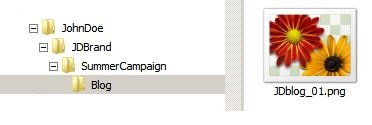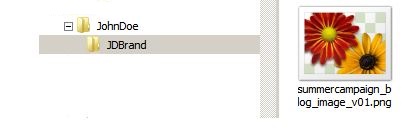Spring Flings: Rebranding Ideas
The start of Spring, with flowers starting to bloom and trees beginning to show their leaves, is a great time to look at branding. This is true for you as a business owner, and for the clients you serve. Branding sometimes seems so abstract. Once you settle on a logo and color scheme, you may be tempted to keep it forever, but just as some of our favorite brands, like Coca-Cola and Pepsi, have a history of logo updates, every business can benefit from a spring refresh.
The Forbes Agency Council noted in a blog post on branding that it helps you stand out from your competition, but a later post from the same group hits home. They say that as purchasing power is undergoing a generational change, taking the time to redefine your messaging and update your look can make you more attractive to these new buyers. In this article, you’ll find tips on branding and marketing ideas for business owner's.
Assess the Brand Look
Whether you are looking for an update for your business, or want to reach out to your clients, start by assessing the current look of your brand across your printed materials. Think about what you hand them, what they see when they walk into your business, and what you mail to them. Gather a selection of the work you have done for customers and promote that to future customer's.
Look at the Business Cards
These are still one of the most important pieces of marketing collateral, but how they are used has shifted. Ask yourself: Are they inviting? Do they communicate the best information? Does the design represent the company? And then ask: Can they be scanned easily? Many people use business card scanning apps or physical scanners, which means that light-gray type, which used to be very fashionable, is less desirable. Color combinations that require more attention to read are also out of fashion and make it hard for those who are color challenged.
If you find cards in the jobs you have done for clients that have these characteristics, this is a great time to reach out and talk about updating their look for the new year.
Look at the Other Marketing Collateral
While branded business cards are the most common piece of business collateral, brochures, notebooks, stickers, labels, window clings, mugs, shirts, and hats are also part of brand visibility. Use the theme of a Spring Refresh to update your marketing products to attract more seasonal customer's. Businesses large and small benefit from a new look, even if it is a minor change. It gives them a reason to offer a new sticker, a new notebook, brochure, or other giveaway using the new color, design, or logo to their clients and prospects.
Update your catalog or booklet's especially the photos. Take new pictures of your shop or store and some of the work you have been doing. Use it to open the discussions and share the possibilities of a brand refresh with new ideas with your clients.
Look at Branded Signs
Signs can be a secret weapon for businesses. Wayfinding signs, special sale and event signs, and in-shop signs help to tell the business story. Bright colors with easy-to-read text lift the brand and the message. Simple things like changing signs and altering designs regularly make them more visible and noticeable. Adding newly branded signs where they have not been used in the past is another excellent way to keep messaging fresh.
Look at Branded Packaging
Packaging is one of the best-kept secrets on the road to growing profitability. Every client has a need for a box, a carton, a label, or a hang tag – they just don’t know it! Promotional items are a great way to keep your company name out in the open, and offering box kits with different promo items is a home run. For restaurant clients, header cards or labels to seal to-go orders. Labels can be a great way to spread the word about new promotions, promote events, and expand branding options.
Updating Spring Color Ideas
For decades we have looked toward pastel colors as Spring approached, but today’s fashions often call for bolder, bright colors in a mix of calming and energetic colors. Businesses should keep up with the color trends by keeping an eye on the Pantone Color each season. Ask us to show you the wide selection of Pantone Colors. For Spring and Summer of 2023, they have core color classics and Fashion Week pallets that can help you attract the interest of that new generation of buyers.
The Print Cafe team is here to help you with ideas for updating your print strategies, branding, and color schemes and those you recommend to clients and prospects. Stay in touch with them for new products to offer and talk tracts to upsell and cross-sell to increase your revenue stream. For More Information Call: 516-561-1468 or Visit Our Website and Check Out all our Marketing Products at:www.printcafeli.com














